Zeolite Y Materials Nanoporous Research
SKU: 68784W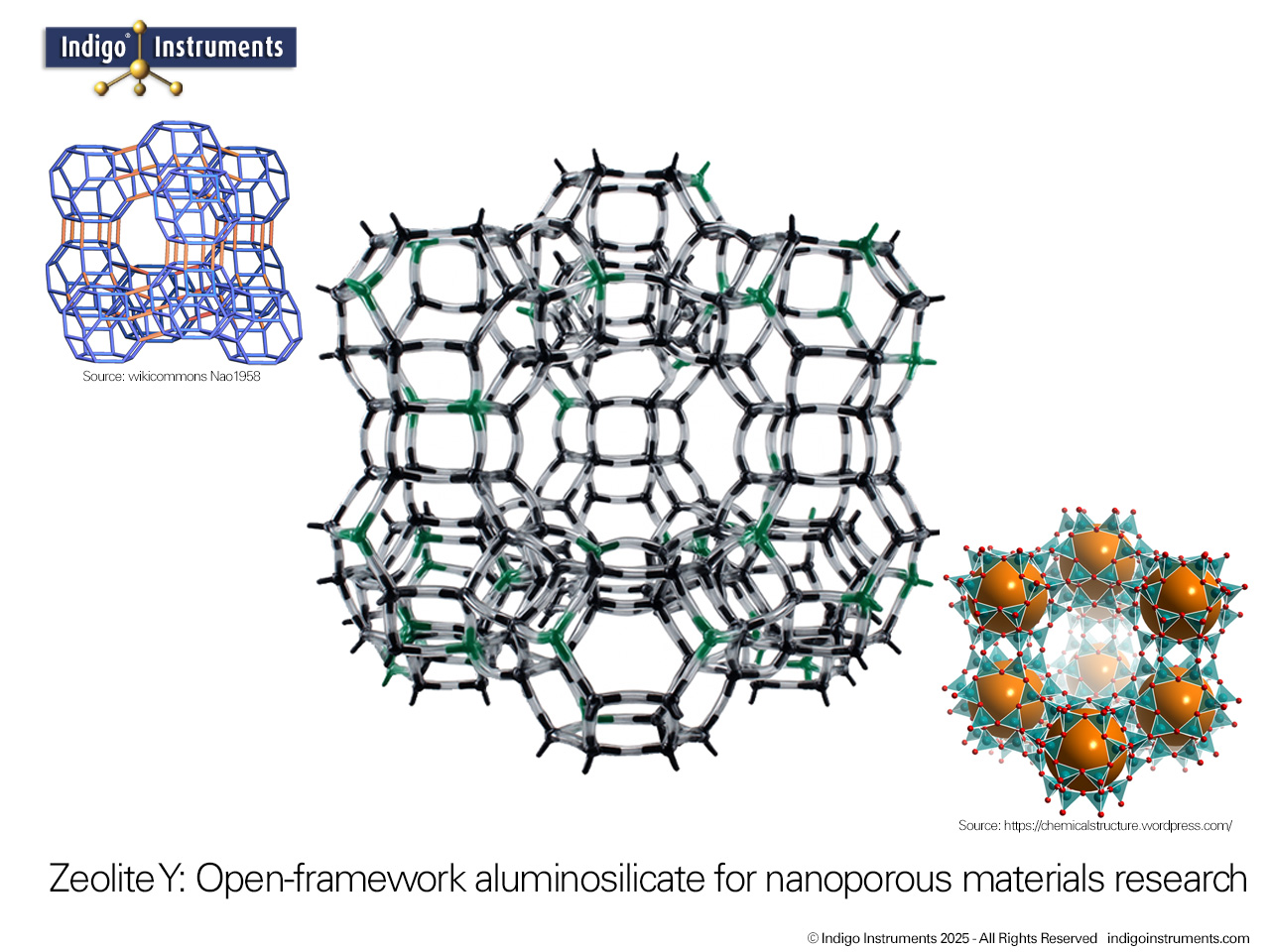
Build an Indigo® Zeolite Y molecular model for teaching nanoporous framework for materials chemistry research. Topics can include pore topology, Si/Al tuning, probe molecules, adsorption isotherms, and stability studies.
Zeolite Y (synthetic faujasite) is a foundational model for modern nanoporous materials research. Its well-defined 12-membered ring channels, tunable Si/Al ratio, and high surface area make Zeolite Y a practical demonstration of how framework topology, chemical composition, and pore environment combine to control adsorption, diffusion, catalysis, and stability. Researchers and advanced students use Zeolite Y to study adsorption isotherms, probe-molecule sizing (e.g., N2, Ar, CO2), framework modification strategies, and regeneration/aging behaviors that are broadly applicable to modern MOFs, mesoporous silicas, and other porous solids.
Indigo Instruments has maintained a substantial inventory of genuine Cochranes of Oxford (Orbit) parts for 30+ years (scroll down to see "Skeletal (Orbit/Minit) and are compatible with every molecular model kit we have sold since day 1. This level of quality may appear expensive but no parts support from other vendors costs even more.
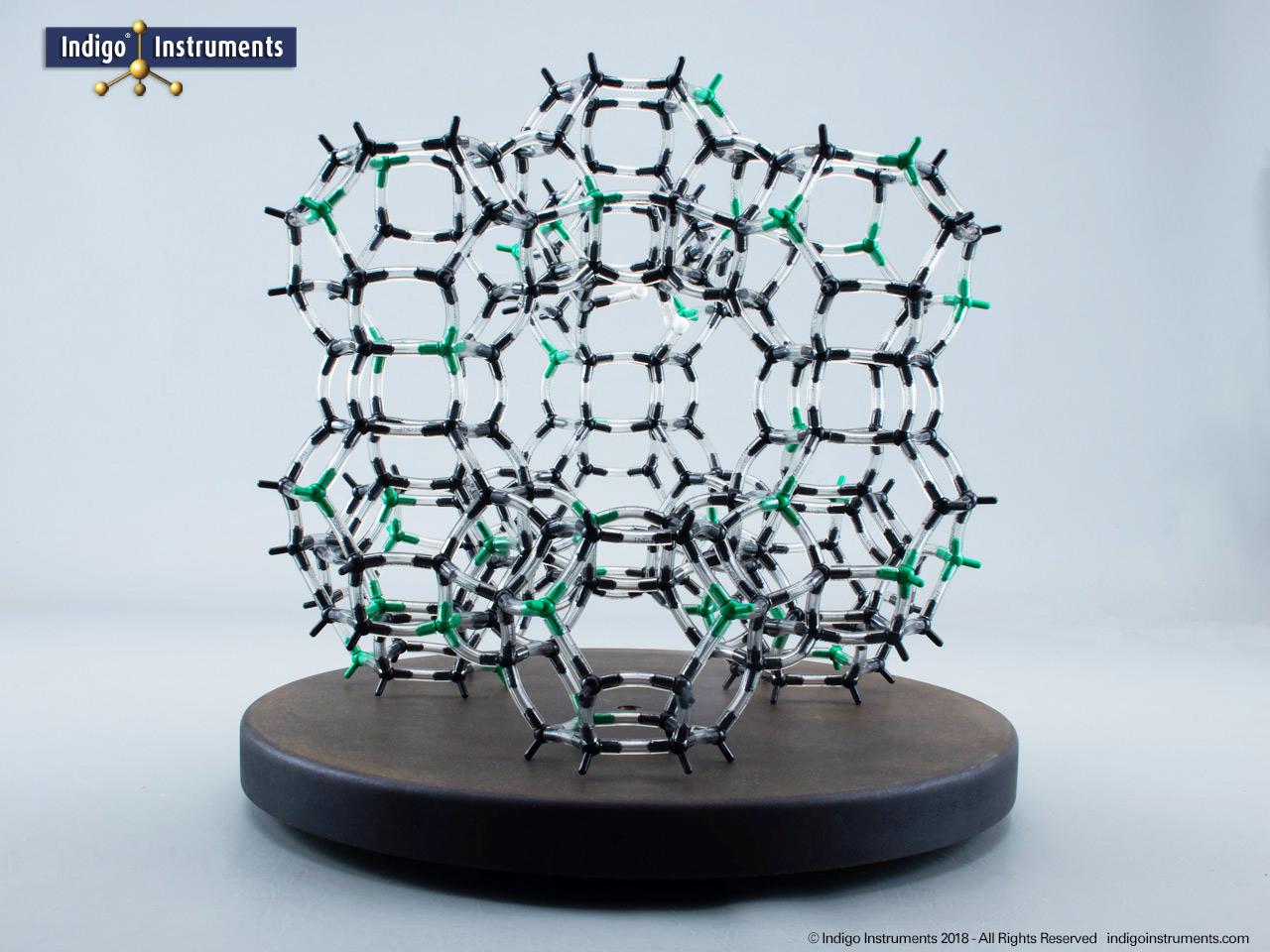
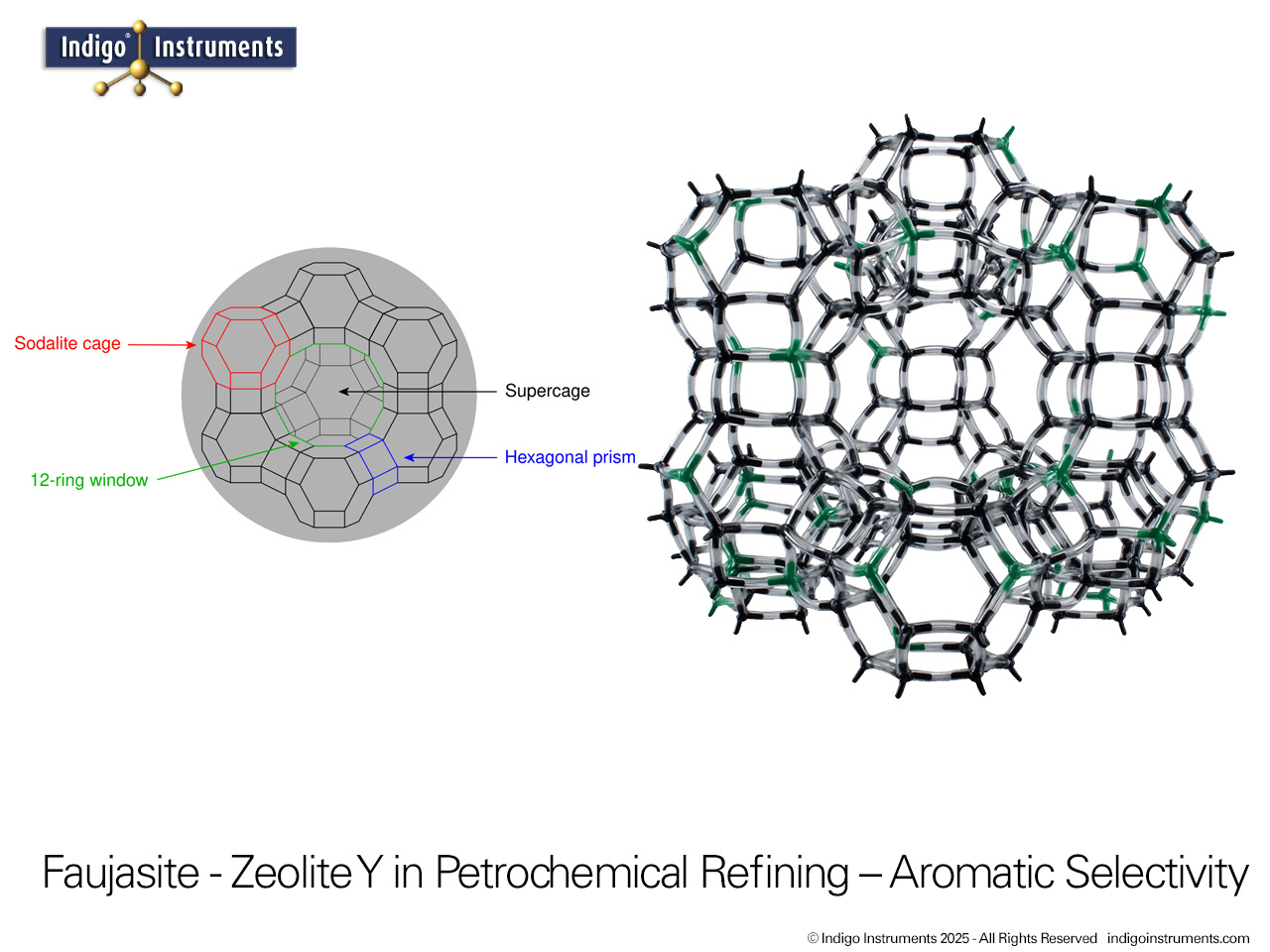
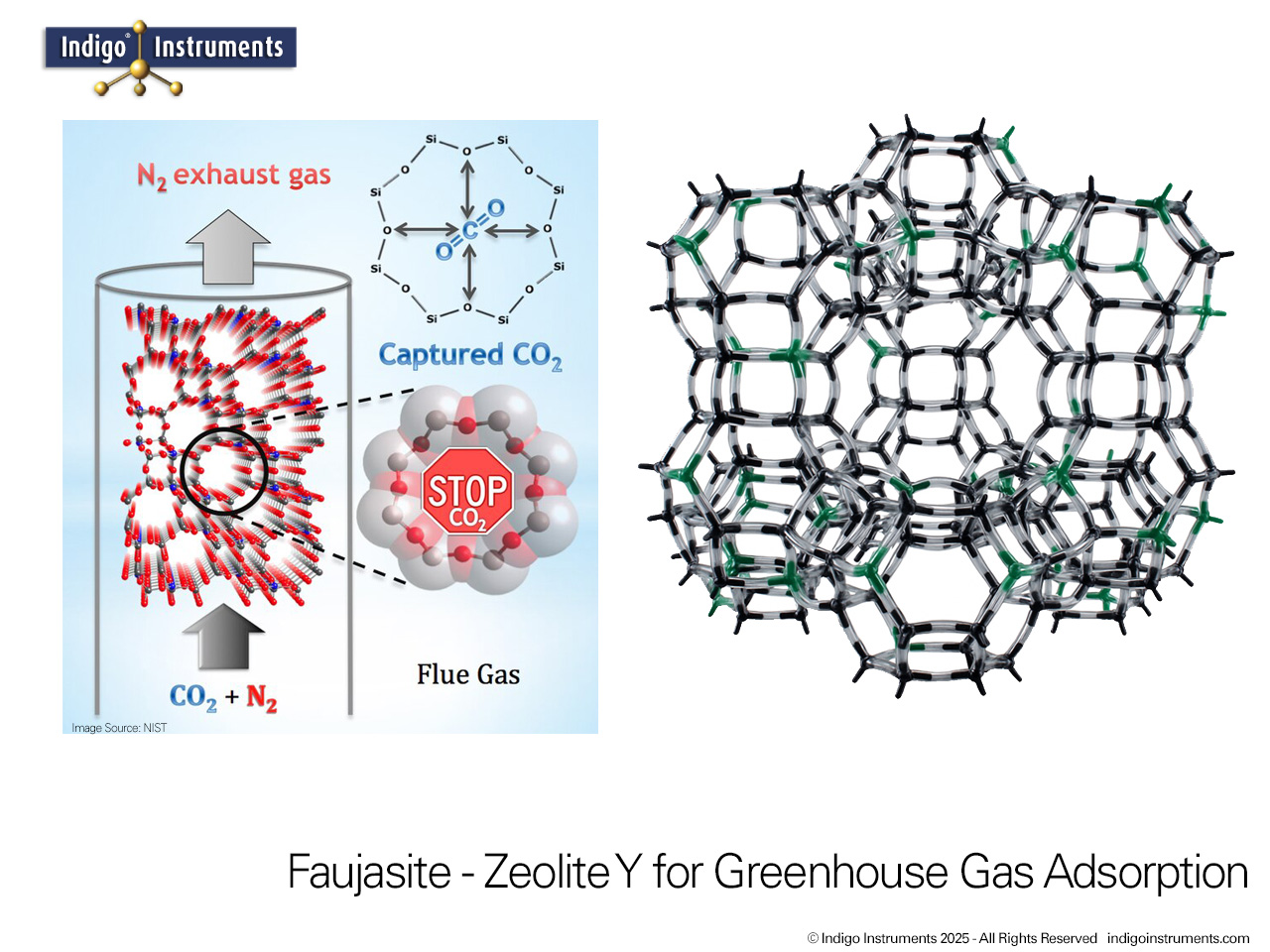
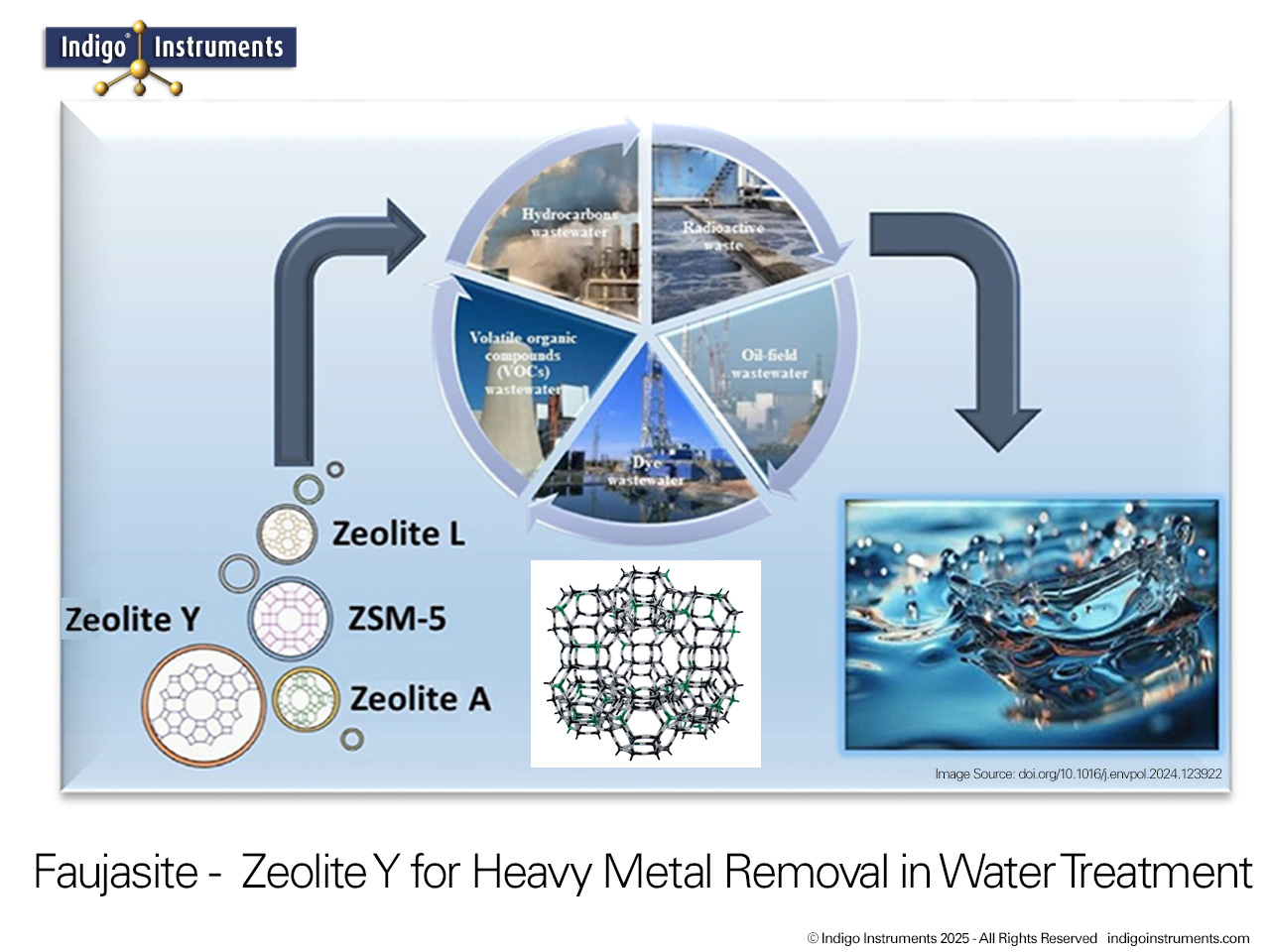
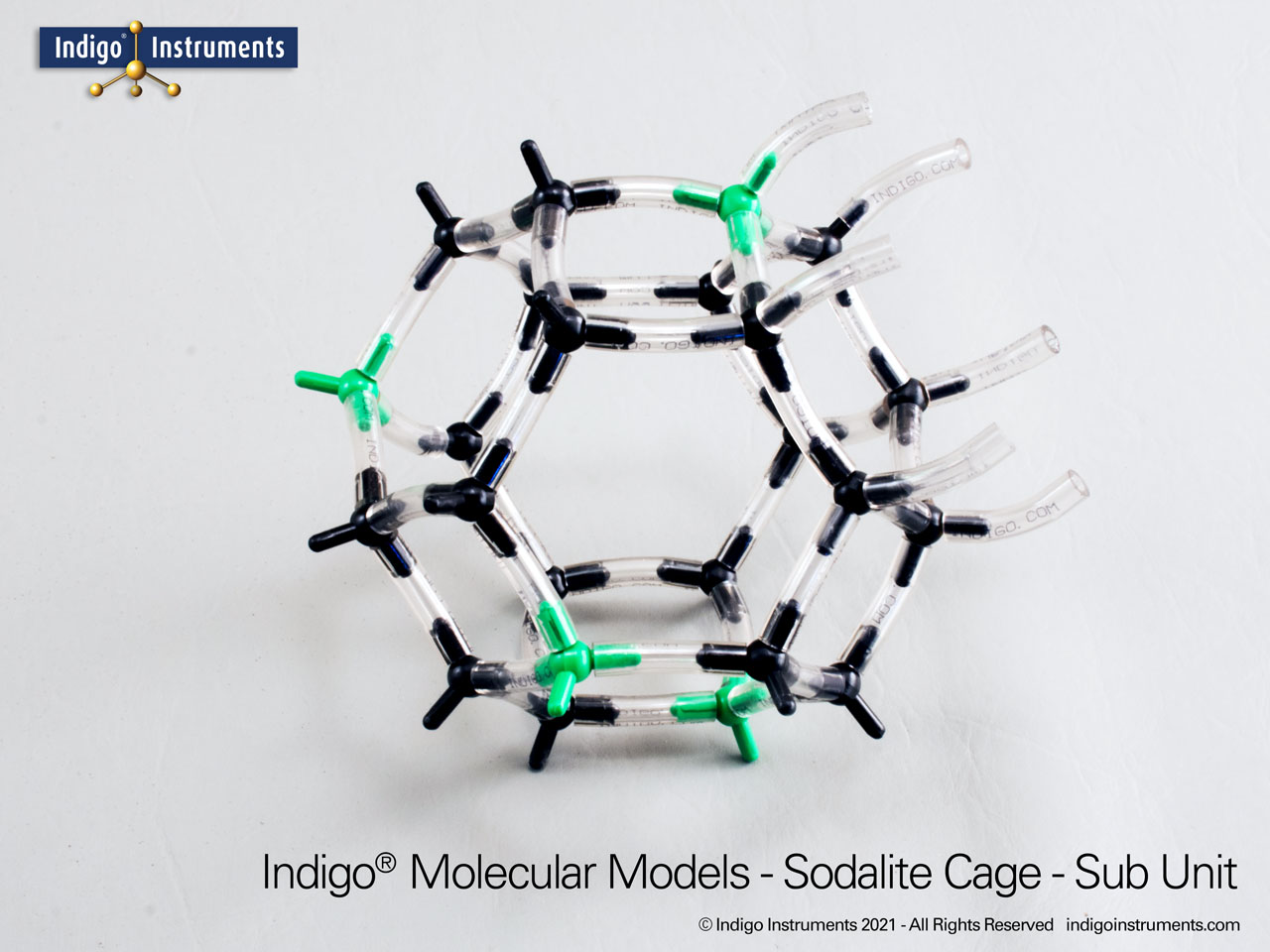
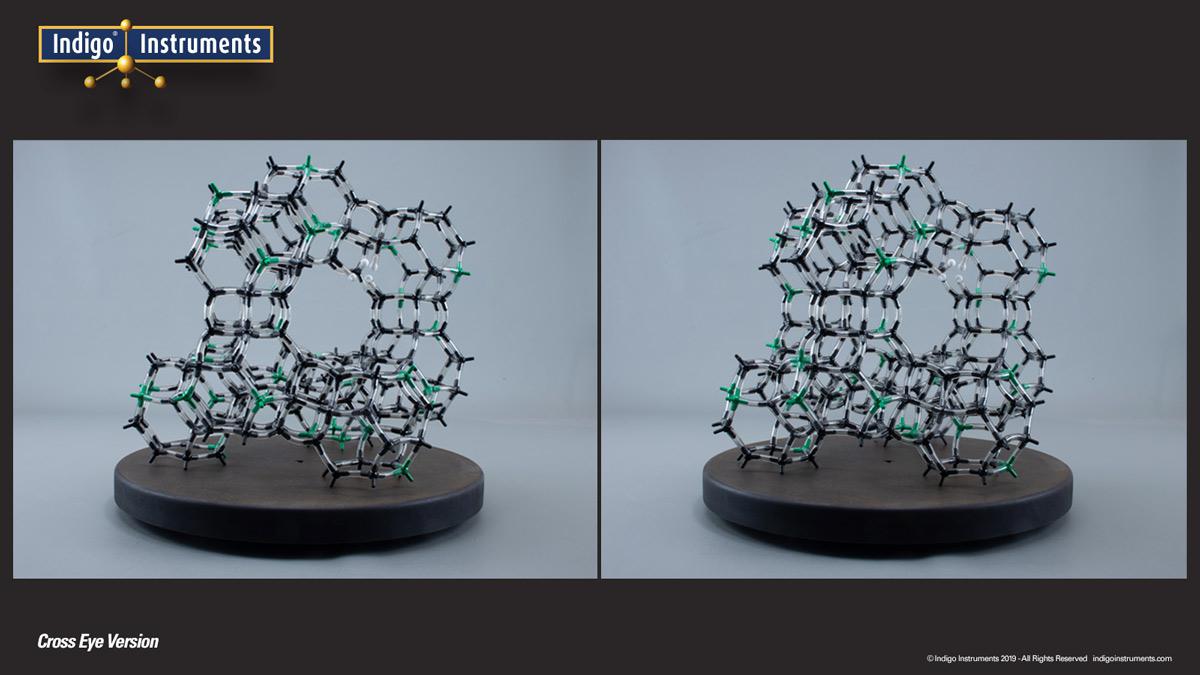
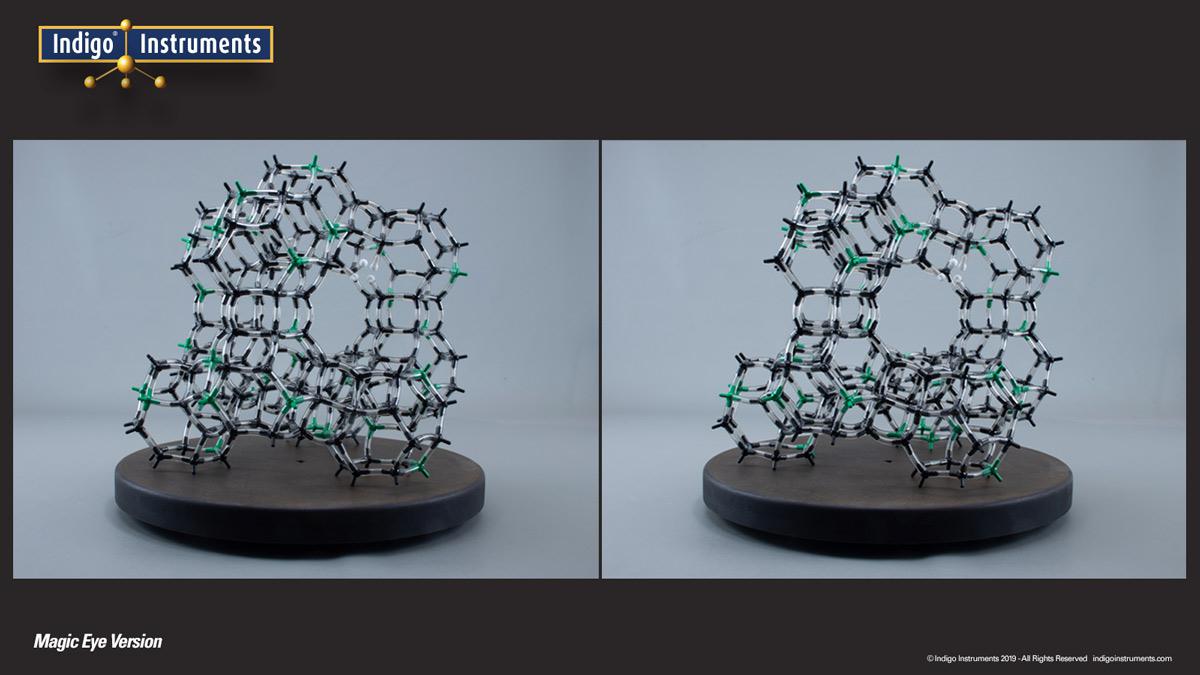
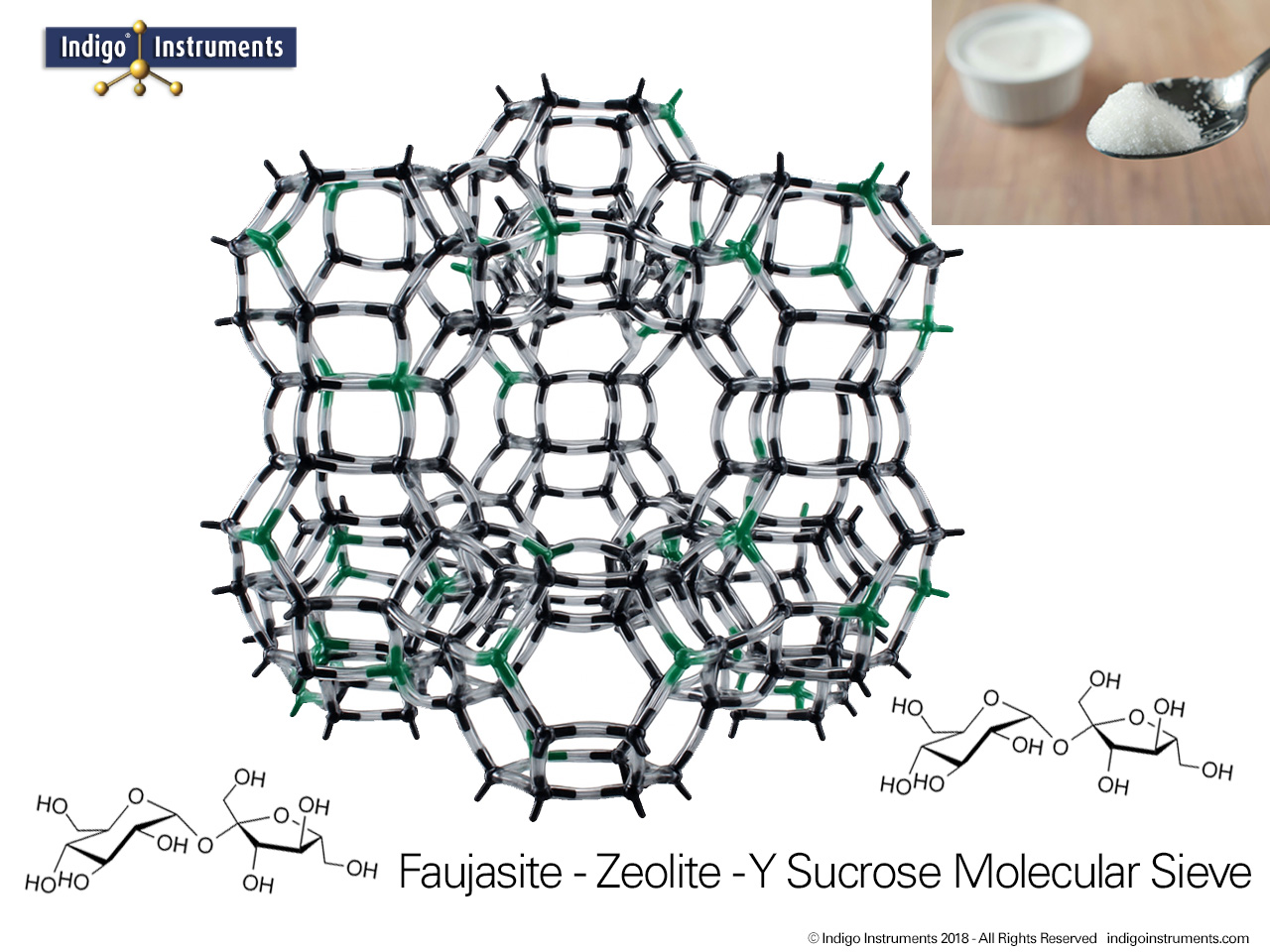
Thanks for the feedback. Trying to describe the assembly was next to impossible so we'll get a picture done of the sodalite cage & add that shortly. Here's a bit more on this model also used for teaching: Zeolite Catalyst Molecular Models Teach Oil Cracking